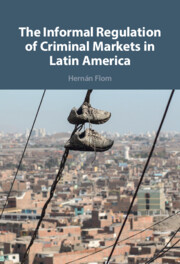Book contents
- The Informal Regulation of Criminal Markets in Latin America
- The Informal Regulation of Criminal Markets in Latin America
- Copyright page
- Contents
- Figures
- Tables
- Acknowledgments
- Abbreviations
- 1 Informal Regulation of Criminal Markets in Latin America
- 2 A Theory of Drug Market Regulation
- 3 Particularistic Confrontation
- 4 Particularistic Negotiation
- 5 Coordinated Protection
- 6 Coordinated Coexistence
- 7 Regulation of Criminal Markets in Weak Institutional Contexts
- Book part
- References
- Index
- References
References
Published online by Cambridge University Press: 18 August 2022
- The Informal Regulation of Criminal Markets in Latin America
- The Informal Regulation of Criminal Markets in Latin America
- Copyright page
- Contents
- Figures
- Tables
- Acknowledgments
- Abbreviations
- 1 Informal Regulation of Criminal Markets in Latin America
- 2 A Theory of Drug Market Regulation
- 3 Particularistic Confrontation
- 4 Particularistic Negotiation
- 5 Coordinated Protection
- 6 Coordinated Coexistence
- 7 Regulation of Criminal Markets in Weak Institutional Contexts
- Book part
- References
- Index
- References
Summary

- Type
- Chapter
- Information
- The Informal Regulation of Criminal Markets in Latin America , pp. 229 - 244Publisher: Cambridge University PressPrint publication year: 2022

